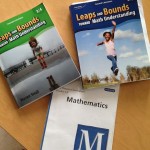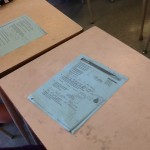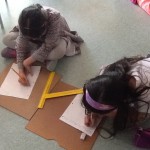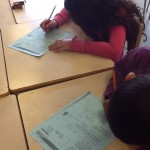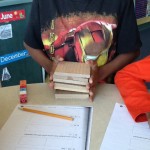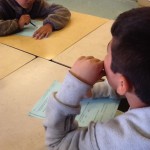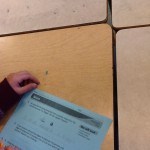Our teacher team explored the use of various gap-closing tools (such as Leaps and Bounds, the ministry’s gap-closing materials, etc.) as a way of supporting students through successful student achievement. We identified the need for a common diagnostic tool that can be shared with others in our school, to help us accurately identify student knowledge/ability level within each math strand, identify gaps in learning and to assist us with planning an appropriate learning trajectory for each student. We developed Grade 3 and Grade 6 math rubrics (at least one per strand) based on the math achievement charts to help with tracking student learning. These charts can be also used to communicate student learning and achievement with parents.
Team Members
SherrI Foster
Toronto District School Board
Maria Markandonis
Toronto District School Board
Team Photo

Professional Learning Goals
- Our teacher team explored the use of diagnostic/gap-losing tools (e.g., gap closing, Leaps and Bounds, etc.).
- We explored how to use gap-closing tools and team teaching to help organize/support guided math groups.
- We collaborated to create student-/parent-friendly rubrics that met the requirements of the math achievement chart.
Activities and Resources
- We purchased Leaps and Bounds and received training on how to use it from the board math coach.
- We then administered a Leap and Bounds unit assessment to students.
- Working together, we assessed the student work together and determined next steps for students/small groups.
- We collaborated together to support students in large and small math groups (using gap-closing materials from Leaps and Bounds).
- We met regularly to discuss student progress.
- We met regularly to create achievement charts/rubrics for each math unit/strand to aid in tracking of student knowledge/ability.
- We ensured that these achievement charts/rubrics were created in parent-friendly language; thus being available for parent communication.
Unexpected Challenges
The timing of the grant was not ideal. We received notification/first funds just before the winter holiday. We then needed to adjust our plan (which involved ordering resources, waiting for the resources to arrive, training to use the resources and scheduling meeting times) to meet the original completion date of May 11, 2015.
We also have yet to share our learning/findings with our staff (due to province-wide job action). In order to share our learning in a meaningful manner, time will be needed to meet with staff over several sessions to explore these resources (both purchased and developed) and for the staff to ask questions. We hope to do so in the new school year.
Enhancing Student Learning and Development
This project enhanced student learning by:
- accurately identifying students’ current math knowledge
- closing gaps or misconceptions students may have about a specific concept
- supporting student learning with the appropriate tools and manipulatives
- providing students with feedback on strengths and next steps
This project will enhance student learning by:
- providing parents with meaningful feedback on strengths and next steps
Sharing
We have had one opportunity to share/introduce our project with the staff. Feedback was positive and staff have expressed an interest in learning more about this project and the tools that we’ve used.
We hope to, in the new school year, schedule a series of meetings wherein we can share, with the staff, more of our findings and discuss ways of implementing these gap-closing materials to best meet the needs of our students. Being a small school, our target audience would be all staff (both homeroom and resource). We would do this in a series of small group professional-learning sessions.
Project Evaluation
Many challenges that were beyond our control affected the full completion of our project. However, we feel that we have achieved a certain level of success with this project. We were introduced to and learned how to use a variety of diagnostic/gap-closing tools. We collaborated and developed rubrics/achievement charts that can be used to easily track student learning; as well as for parent communication.
Given more time, we would have used the resources more thoroughly, thus developing a deeper understanding of how these tools can be used as a standard tool in our classes. This would be of great help when time comes to share our knowledge with the other staff members of our school.
Resources Used
Leaps and Bounds Grade 3/4
Leaps and Bounds Grade 5/6
Ontario Math Curriculum Grade 1-8
Resources Created
These resources will open in your browser in a new tab, or be downloaded to your computer.



